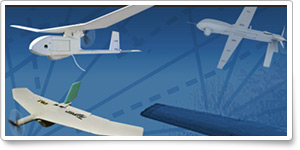|
|||||
Training TipsTime to trim?
Retrimming isn’t always needed when making changes: If you have been flying straight and level and wish to descend at the same airspeed, simply reduce power. The aircraft will pitch down slightly and descend at your trimmed airspeed—easy!
A configuration change such as adding flaps requires that you adjust the pitch attitude to maintain a constant airspeed, then retrim. With practice you can make this a simple process. For example, in a high-wing Cessna 150, adding 10 degrees of flaps will cause the nose to pitch up slightly—but if you reduce power slightly just after setting the flap position, the nose-down response to the power change should cancel out the nose-up effect of adding flaps.
What’s a better idea during a rapid series of airspeed and/or configuration changes, or when practicing maneuvers: retrimming for each, or simply holding the needed control pressures? That’s a question many student pilots ask as they work to master trim technique.
One answer doesn’t fit all scenarios or apply to all aircraft. An aircraft that is light in pitch and easily controlled with yoke or stick pressure may make less trim demand on the pilot during a maneuver than, say, a four-seat aircraft with a reputation for nose heaviness, that is being flown at a center-of-gravity position close to the forward limit, as would be the case with only the front seats occupied.
In any aircraft, the answer also depends on the flight task. A brief climb to correct a minor altitude excursion, after which you will resume your previous cruise airspeed, could be accomplished with a simple addition of power and back-elevator pressure, followed by leveling off and returning to your cruise power setting. By contrast, a 360-degree steep turn might prove difficult without some assistance from the trim system to help you maintain the needed up-elevator input.
One scenario in which trimming is the safe choice is during landing—especially when close to the ground.
”Ground effect decreases elevator control effectiveness and increases the effort required to raise the nose,“ explains the Airplane Flying Handbook.
Let the trim system help keep your flying smooth—and safe! Flight Training NewsAOPA names Mark Baker president
Fuller shares parting adviceCraig Fuller’s first bit of advice to the new AOPA president: Get to know the members. Fuller, who announced in February that he was leaving AOPA this year, admits the advice was handed down by his predecessor, Phil Boyer, and has served him well. Read more >> UND Aerospace tapped to work on FAA safety programThe University of North Dakota John D. Odegard School Of Aerospace Sciences has been chosen by the FAA to be part of a pilot program to develop a safety management system (SMS) for the school’s Part 141 FAA-approved flight training program. “SMS is the formal application of best management practices to the business of aviation safety,” said Frank Argenziano, assistant director for aviation safety. “We have always had a strong safety culture at UND Aerospace, but SMS provides more structure, a better system of checks and balances and more input on safety concerns by students and staff.” Free, available, and usefulGPS has revolutionized aviation—from more accurate VFR navigation data to enabling IFR approaches at nearly any airport. But as with any technology, it carries certain challenges. Learn more about GPS, and how to maximize its utility without compromising safety, by checking out the Air Safety Institute's GPS from the Ground Up Safety Advisor. Download the PDF >> Five flight planning appsAOPA members continue to send in recommendations for apps that they say help make all aspects of the planning process easier. Read more >> Frank Sinatra jet donated to vocational schoolArik Kislin, the owner of JFI Jets, has donated his Gulfstream II business jet to Wilson Technological Center at Republic Airport in Farmingdale, N.Y. The Gulfstream, once owned by Frank Sinatra, will be used as a training jet for future aviation mechanics in the Western Suffolk BOCES aviation maintenance technology program at Wilson Tech’s Republic Airport campus. The 1968 Gulfstream holds 12 passengers and is powered by two Rolls Royce engines. McKinney aviation program receives flight simulatorMcKinney Independent School District’s aviation program in Texas has bought a Redbird LD Flight Simulator. Purchased with a career and technical education grant, the simulator resides at McKinney North High School, making it the only program in North Texas equipped with an FAA-approved flight simulator. Test your knowledge of density altitudeDensity altitude is perhaps the single most important factor that affects aircraft performance. How knowledgeable are you on this critical topic? Take this Air Safety Institute safety quiz to find out >> Training ResourcesSpatial disorientation: Confusion that killsHumans are VFR-only creatures. The senses used to maintain balance and know “which end is up” are completely unreliable when bodies are in motion without visual reference to the world around us. No amount of training or experience can overcome this physiological limitation. Pilots deprived of visual references while flying can quickly lose control of the aircraft and succumb to one of general aviation’s biggest killers: spatial disorientation. Read this Air Safety Institute safety advisor on how to deal with it. Download the PDF >> Did you know that student pilots who join AOPA are three times more likely to complete their flight training? Membership includes unlimited access to aviation information by phone (800/USA-AOPA, weekdays from 8:30 a.m. to 8 p.m. Eastern time) or from Flight Training Online or AOPA Online. If you’re not already a member, join today and get the pilot’s edge.
Chairman of the board discusses Baker’s selectionAOPA Chairman of the Board Bill Trimble talks about the selection of Mark Baker as AOPA's new president. Get an update on the Flying4Conservation duo’s crossing of the Atlantic in a Super Cub. And, listen up, Dr. Jonathan Sackier speaks up about hearing loss. AOPA Live This Week, Aug. 22 >> Career PilotNew owner on horizon for Frontier?A Phoenix-based investment firm that until recently was a major backer of Spirit Airlines may be close to a deal for the purchase of Frontier Airlines. Indigo Partners LLC is said to be close to a deal with Frontier's owner, Indianapolis-based Republic Airways Holdings, for purchase of the carrier, Thom Forbes reported in MediaPost Aug. 12. William “Bill” Franke and John Wilson, Indigo managing partners, resigned from Spirit’s board in late July, presumably because Indigo soon will own the low-cost competitor. Republic said late last month that it had entered exclusive, nonbinding discussions to sell Frontier to an unnamed third party, and that it hoped to complete the deal by the end of September. Republic acquired Spirit for $1.1 billion in 2009 after a bidding war with Southwest Airlines.
For more aviation career news, see the Flight Training website. Plane SpotterOrder up!
Training ProductsASA releases test prep books for 2014ASA has just released the 2014 editions of its Test Prep Books series, which include questions and answer stems for all the FAA knowledge exams. Supported with explanations and organized into chapters based on subject matter for efficient studying, each book identifies the specific questions for the test to which it applies: airplane, rotorcraft, gyroplane, glider, lighter-than-air, or weight-shift control. Book covers operating aircraft safelyIn his book Understanding Flying, author Richard Taylor helps students and pilots find their flying flaws. He also explains everything you need to know to operate an airplane safely. The cost is $24.95.
Note: Products listed have not been evaluated by ePilot editors unless otherwise noted. AOPA assumes no responsibility for products or services listed or for claims or actions by manufacturers or vendors. Member BenefitsThe dos and don’ts in preparing a special issuance packetIf you develop a medical problem during the time period that your current FAA medical certificate is in effect, Dr. Warren Silberman, former manager of FAA Aerospace Medical Certification, advises going to the medical certification section of AOPA’s website to see if the condition will require a special issuance waiver. Read more >> Coverage for life changesIf something in your life has recently changed—such as pay increases, promotions, marriages, purchasing a larger home, or having children—you probably need to add to your coverage. If you’re like many, you probably don’t have enough life insurance. Recent studies have shown that life insurance ownership is at a 50-year low, with half of U.S. households admitting that they don’t have enough life insurance to adequately support their loved ones. BlogsDon’t assumeBlogger Chip Wright says he’s been doing this aviation thing for 22 years. One thing he knows is that he tends to take certain things for granted. In the airlines, there are certain industry standards in the way things are done, and having been part of the system now for nearly 17 years, he knows that he can fly with a pilot from just about any airline, and they would be able to fly from A to B with much less stress and uncertainty than you would be inclined to think. Why? Read more >> Flying to national parksAOPA is working to encourage more recreational flying. We can do so by opening up more airstrips, preventing airstrips and airports from closing, engaging in fly-ins and other flying events, introducing new people to general aviation, etc.; we can also increase recreational flying by increasing visitation to some of the nation’s most beautiful spots: the U.S. National Park Service system via its airports. Read more >> AOPA Career OpportunitiesEver dream of turning your passion for aviation into a career? We’re looking for a staff assistant/PAC coordinator and AOPA Live editor/graphic artist. To learn more about other AOPA career opportunities, visit AOPA Online. Community
AVIATION EVENTS & WEATHER
|
||||||||||||||||||||||||||||||||||||


 Trim makes flying facile. Set power and pitch for the airspeed and vertical rate you desire. Then a trim adjustment lets you fly “hands off” until a change is necessary.
Trim makes flying facile. Set power and pitch for the airspeed and vertical rate you desire. Then a trim adjustment lets you fly “hands off” until a change is necessary. 






